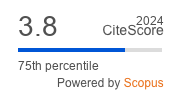Article | Open Access
Co-Creating Change: Seedbed Interventions as Catalysts for Equitable Urban Planning—The Case of Umeå
| Views: | 3118 | | | Downloads: | 1871 |
Abstract: The ongoing urbanisation and densification at the intersection with increasing environmental and health crises demand a holistic, equitable, and inclusive approach to urban planning, which has also been highlighted in the EU Green Deal’s inclusive approach to sustainable urban planning aligned with the UN SDGs’ “Leave No One Behind.” This article introduces the seedbed intervention as a novel, community-driven, co-creative approach to Nature-based Solutions (NbS) that addresses gaps in equitable and inclusive urban planning frameworks. On the case of Umeå (Sweden), the article introduces the seedbed intervention approach and demonstrates how the approach facilitates the development of locally appropriate and sustainable NbS. The results show that the seedbed intervention approach improved the alignment between local needs and NbS design, connected diverse user groups, and catalysed curiosity, interest, and participation among citizens with the help of applying art-based methods. By demonstrating the practical application of a seedbed intervention, this research contributes to the development of scalable frameworks for more equitable and inclusive urban planning.
Keywords: art-based methods; co-creation; equitable cities; inclusivity; Nature-based Solutions; SDG 11; seedbed intervention; sustainable planning; urban green spaces
Published:
© Julia Gäckle, Mariia Chebotareva, Bianka Plüschke-Altof, Jannis Meul, Ilkka Väänänen, Shreya Utkarsh, Axel Timpe, Frank Lohrberg, Taru Suutari, Eva Maaherra Lovheim, Tadhg MacIntyre. This is an open access article distributed under the terms of the Creative Commons Attribution 4.0 license (http://creativecommons.org/licenses/by/4.0), which permits any use, distribution, and reproduction of the work without further permission provided the original author(s) and source are credited.


